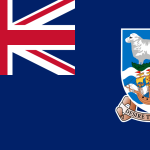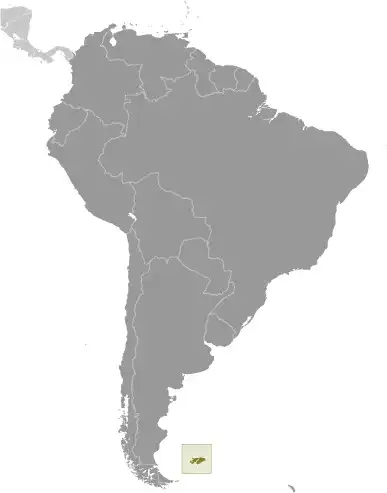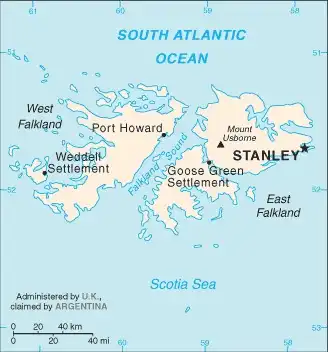
Falkland Islands (Malvinas)
Veröffentlicht: 18. June 2022 - Letztes Update: 28. February 2025
Country Data Dashboard

Population
3,662 (2021 est.)
Growth: 0.01% (2014 est.)
GDP
$206.4 million
(2015 est.)
Area
12,173 sq km
| Government type: | parliamentary democracy (Legislative Assembly); self-governing overseas territory of the UK |
| Capital: | Stanley |
| Languages: | English 89%, Spanish 7.7%, other 3.3% (2006 est.) |
People & Society
Ethnicity (2016 est.)
Religion (2016 est.)
Age structure
No image available.
Economy
Economic overview
British South American territorial economy; longstanding fishing industry; surging tourism prior to COVID-19 and Brexit; recent offshore hydrocarbon discoveries threaten ecotourism industries; no central bank and must have British approval on currency shifts
Real GDP (purchasing power parity) in Billion $
Real GDP per capita in $
Top 5 Import Partner in 2022 (98%)
Top 5 Import Commodities in 2022
- refined petroleum ⛽
- prefabricated buildings 👕🧶
- aircraft ✈️
- plastic products ♻️
- iron structures 🛠️
Top 5 Export Partner in 2022 (98%)
Top 5 Export Commodities in 2022
- shellfish 🐟
- fish 🐟
- wool 🧶
- sheep and goat meat 🥩
- surveying equipment 📏
Geography
Map

Area
Natural resources
- fish 🐟
- squid 🦑
- wildlife 🐾
- calcified seaweed 🪨🌿
- sphagnum moss 🌿🪵
Climate
cold marine; strong westerly winds, cloudy, humid; rain occurs on more than half of days in year; average annual rainfall is 60 cm in Stanley; occasional snow all year, except in January and February, but typically does not accumulate
Historical Background Information
Although first sighted by an English navigator in 1592, the first landing (English) did not occur until almost a century later in 1690, and the first settlement (French) was not established until 1764. The colony was turned over to Spain two years later, and the islands have since been the subject of a territorial dispute, first between Britain and Spain, then between Britain and Argentina. The UK asserted its claim to the islands by establishing a naval garrison there in 1833. Argentina invaded the islands in 1982. The British responded with an expeditionary force and after fierce fighting forced an Argentine surrender on 14 June 1982. With hostilities ended and Argentine forces withdrawn, UK administration resumed. In response to renewed calls from Argentina for Britain to relinquish control of the islands, a referendum was held in 2013 that resulted in 99.8% of the population voting to remain a part of the UK.
